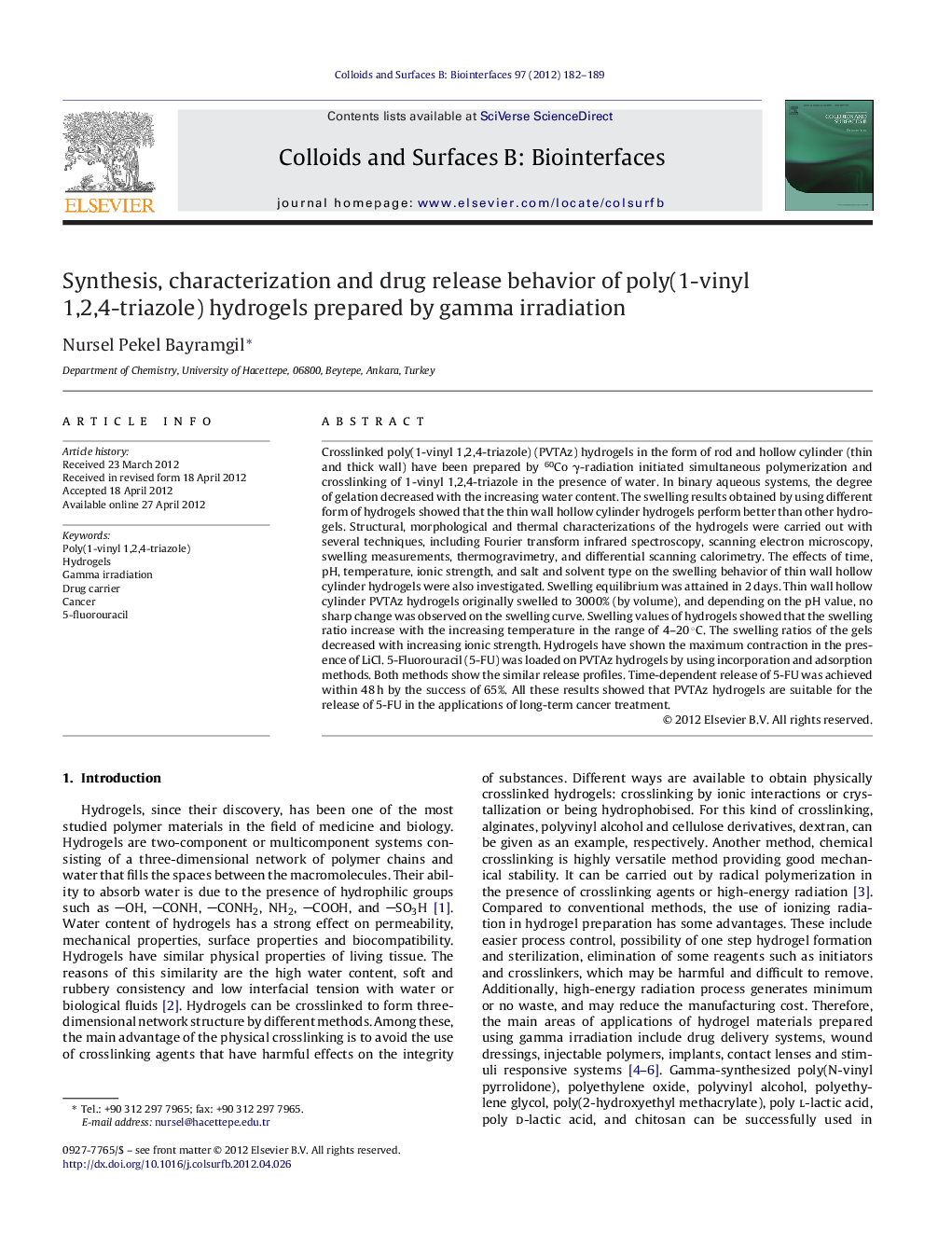| Article ID | Journal | Published Year | Pages | File Type |
|---|---|---|---|---|
| 600713 | Colloids and Surfaces B: Biointerfaces | 2012 | 8 Pages |
Crosslinked poly(1-vinyl 1,2,4-triazole) (PVTAz) hydrogels in the form of rod and hollow cylinder (thin and thick wall) have been prepared by 60Co γ-radiation initiated simultaneous polymerization and crosslinking of 1-vinyl 1,2,4-triazole in the presence of water. In binary aqueous systems, the degree of gelation decreased with the increasing water content. The swelling results obtained by using different form of hydrogels showed that the thin wall hollow cylinder hydrogels perform better than other hydrogels. Structural, morphological and thermal characterizations of the hydrogels were carried out with several techniques, including Fourier transform infrared spectroscopy, scanning electron microscopy, swelling measurements, thermogravimetry, and differential scanning calorimetry. The effects of time, pH, temperature, ionic strength, and salt and solvent type on the swelling behavior of thin wall hollow cylinder hydrogels were also investigated. Swelling equilibrium was attained in 2 days. Thin wall hollow cylinder PVTAz hydrogels originally swelled to 3000% (by volume), and depending on the pH value, no sharp change was observed on the swelling curve. Swelling values of hydrogels showed that the swelling ratio increase with the increasing temperature in the range of 4–20 °C. The swelling ratios of the gels decreased with increasing ionic strength. Hydrogels have shown the maximum contraction in the presence of LiCl. 5-Fluorouracil (5-FU) was loaded on PVTAz hydrogels by using incorporation and adsorption methods. Both methods show the similar release profiles. Time-dependent release of 5-FU was achieved within 48 h by the success of 65%. All these results showed that PVTAz hydrogels are suitable for the release of 5-FU in the applications of long-term cancer treatment.
Graphical abstract5-FU release at pH 4.0 and pH 7.4 from PVTAz hydrogels as a function of time.Figure optionsDownload full-size imageDownload as PowerPoint slideHighlights► We synthesized poly(1-vinyl 1,2,4-triazole) hydrogels in different geometries by 60Co-γ irradiation. ► Thin wall hollow cylinder PVTAz hydrogels originally swelled to 3000% (by volume). ► The swelling ratio of PVTAz hydrogels remained constant in the temperature range of 20–70 °C. ► Hydrogels have shown the maximum contraction in the presence of LiCl. ► Time-dependent release of 5-FU was achieved within 48 h by the success of 65%.
